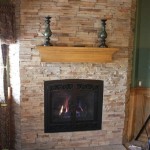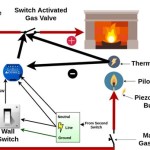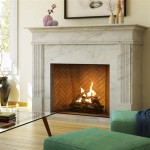How Much Does It Cost To Replace A Wood Burning Fireplace Insert?
Replacing a wood burning fireplace insert is a significant home improvement project that can enhance both the functionality and aesthetic appeal of a living space. However, the decision to replace an existing insert often hinges on understanding the associated costs. These costs can vary considerably based on several factors, including the type of insert chosen, the complexity of the installation, and regional labor rates. This article provides a comprehensive overview of the expenses involved in replacing a wood burning fireplace insert, breaking down the various components and offering insights into potential cost-saving strategies.
A wood burning fireplace insert is essentially a self-contained firebox that is designed to be installed inside an existing masonry fireplace. It offers greater heating efficiency and cleaner burning compared to an open fireplace. Replacing an existing insert typically involves removing the old unit, preparing the fireplace opening, installing the new insert, and ensuring proper venting and safety features are in place.
The overall cost of replacing a wood burning fireplace insert can range from a few thousand dollars to upwards of ten thousand dollars or more, depending on the specific circumstances of the project. This figure encompasses the cost of the new insert itself, as well as labor charges for installation and any necessary modifications to the existing fireplace structure. To gain a clearer understanding of the financial commitment involved, it’s crucial to examine each component of the replacement process in detail.
Factors Influencing the Cost of a Wood Burning Fireplace Insert
Several key factors directly impact the final price of replacing a wood burning fireplace insert. These include the type of insert, the size and complexity of the installation, the need for chimney modifications, and labor costs. Understanding these factors is essential for budgeting accurately and making informed decisions about the replacement project.
Type of Wood Burning Insert: Wood burning inserts come in various models, each with different features and price points. EPA-certified inserts, which are designed for cleaner and more efficient burning, generally cost more than non-certified models. Catalytic inserts, which use a catalytic combustor to reduce emissions, also tend to be more expensive. The size of the insert, measured in its heating capacity (BTUs), also influences the price; larger inserts capable of heating a larger space will naturally cost more. More elaborate designs, such as those with decorative cast-iron finishes or built-in blowers, will add to the overall cost. The material the insert is constructed from can also affect the price. Inserts made with thicker steel or those with more intricate designs can be more costly.
Size and Complexity of Installation: The size and complexity of the installation process will significantly affect labor charges. A straightforward replacement, where the new insert is a similar size to the old one and requires minimal modifications, will generally be less expensive. However, if the fireplace opening needs to be enlarged or modified to accommodate the new insert, the labor costs will increase. Additionally, if the existing fireplace has structural issues that need to be addressed before the insert can be installed, this will add to the overall expense. The accessibility of the fireplace can also affect the cost. Fireplaces located in awkward or difficult-to-reach areas may require more time and effort to install, leading to higher labor costs.
Chimney Modifications: The condition of the existing chimney is a critical factor in determining the overall cost of the replacement project. In many cases, installing a new wood burning insert requires relining the chimney with a stainless-steel liner. This is often necessary to ensure proper venting and to meet safety codes. The cost of a chimney liner can vary depending on the material (typically stainless steel), the diameter, and the length required to reach the top of the chimney. If the chimney is in poor condition and requires repairs beyond relining, such as brickwork or repointing, the costs will increase significantly. Furthermore, if the existing chimney does not meet the required height for proper drafting, it may need to be extended, which will involve additional labor and materials.
Labor Costs: Labor costs for installing a wood burning fireplace insert can vary significantly depending on the geographic location, the experience of the installer, and the complexity of the project. Generally, it is advisable to obtain quotes from several qualified installers to compare prices and ensure that the chosen contractor is licensed and insured. Installation costs typically include the removal of the old insert, preparation of the fireplace opening, installation of the new insert, connection of the venting system, and ensuring that the insert is properly sealed and tested. Some installers may charge an hourly rate, while others may provide a fixed price for the entire project. It is important to clarify what is included in the labor quote and to inquire about any potential additional charges.
Breaking Down the Costs: A Detailed Estimate
To provide a more concrete understanding of the costs involved, let’s examine a hypothetical example of replacing a wood burning fireplace insert. This estimate includes the key components discussed above and provides a range of potential expenses.
Cost of the Wood Burning Insert: The cost of the insert itself can range from $1,500 to $5,000 or more, depending on the factors mentioned earlier. A basic, non-catalytic insert might cost around $1,500 to $2,500, while a high-efficiency, EPA-certified insert with advanced features could cost $3,000 to $5,000 or more. Factors such as the BTU rating, design, and brand reputation also influence the price.
Chimney Liner Installation: Installing a new stainless-steel chimney liner typically costs between $800 and $2,500, depending on the length of the chimney and the complexity of the installation. This price includes the cost of the liner itself, as well as the labor to install it. If the existing chimney requires repairs beyond relining, such as brickwork or repointing, the costs could increase significantly, potentially adding several hundred to several thousand dollars to the overall project.
Installation Labor: The cost of labor for removing the old insert and installing the new one can range from $500 to $2,000 or more, depending on the complexity of the project and the hourly rate of the installer. A straightforward installation might cost around $500 to $1,000, while a more complex installation that requires modifications to the fireplace opening or chimney could cost $1,500 to $2,000 or more. It is crucial to obtain detailed quotes from multiple installers to compare prices and ensure that the chosen contractor is qualified and experienced.
Additional Costs: In addition to the core components listed above, there may be other costs associated with the replacement project. These could include permits, which may be required by local building codes, and can range from $50 to $200 or more. There may also be costs associated with disposing of the old insert, which can range from $50 to $150. If the fireplace area needs to be cleaned or repaired after the installation, this could add to the overall expense. Furthermore, if the existing fireplace surround or hearth needs to be modified to accommodate the new insert, this could involve additional labor and materials.
Grand Total Estimate: Based on these figures, the total cost of replacing a wood burning fireplace insert could range from $2,800 to $9,650 or more. This is a broad estimate, and the actual cost will vary depending on the specific circumstances of the project. It is always best to obtain multiple quotes from qualified installers to get a more accurate estimate.
Cost-Saving Strategies for Fireplace Insert Replacement
While replacing a wood burning fireplace insert can be a significant investment, there are several strategies that homeowners can employ to potentially reduce the overall cost. These include exploring energy efficiency rebates, comparing quotes from multiple installers, and considering DIY options for certain aspects of the project.
Energy Efficiency Rebates: Many local, state, and federal governments offer rebates and incentives for homeowners who install energy-efficient appliances, including wood burning fireplace inserts. These rebates can help offset the initial cost of the insert and make the replacement project more affordable. It is worth researching available rebates and incentives in the homeowner's area before proceeding with the project. The Database of State Incentives for Renewables & Efficiency (DSIRE) is a comprehensive resource for finding information about energy efficiency programs and rebates.
Obtain Multiple Quotes: One of the most effective ways to save money on a fireplace insert replacement is to obtain quotes from multiple installers. This allows homeowners to compare prices and services and to choose the contractor that offers the best value. When obtaining quotes, it is important to provide the installers with as much information as possible about the existing fireplace and the desired insert. This will help them provide more accurate estimates. It is also important to ask the installers about their experience and qualifications, and to check their references.
DIY Options (Proceed with Caution): While it is generally recommended to hire a qualified installer for the actual installation of a wood burning fireplace insert, there may be some aspects of the project that homeowners can handle themselves to save money. For example, homeowners could be responsible for removing the old insert and disposing of it, or for cleaning and preparing the fireplace area before the new insert is installed. However, it is important to proceed with caution when considering DIY options, as incorrect installation or modifications can be dangerous and could void the warranty on the new insert. It is crucial to consult with a qualified professional before attempting any DIY work on a fireplace insert replacement project.

Estimated Page Fireplaces Stoves Inserts Wood Gas Pellet

Estimated Page Fireplaces Stoves Inserts Wood Gas Pellet

How Much Does It Cost To Remove A Fireplace Insert 2024 Data Angi

Estimated Page Fireplaces Stoves Inserts Wood Gas Pellet

How Much Does A Gas Fireplace Insert Cost Forbes Home

Fireplace Vs Wood Stove Installation Costs Stamford Fireplaces

Fireplace Installation Cost 2024 Gas Wood Burning Electric
.aspx?strip=all)
Cost Of Operating A Wood Insert Cord Calculator Regency

Estimated Page Fireplaces Stoves Inserts Wood Gas Pellet

Wood Burning Fireplace Inserts Insert Installation
Related Posts








